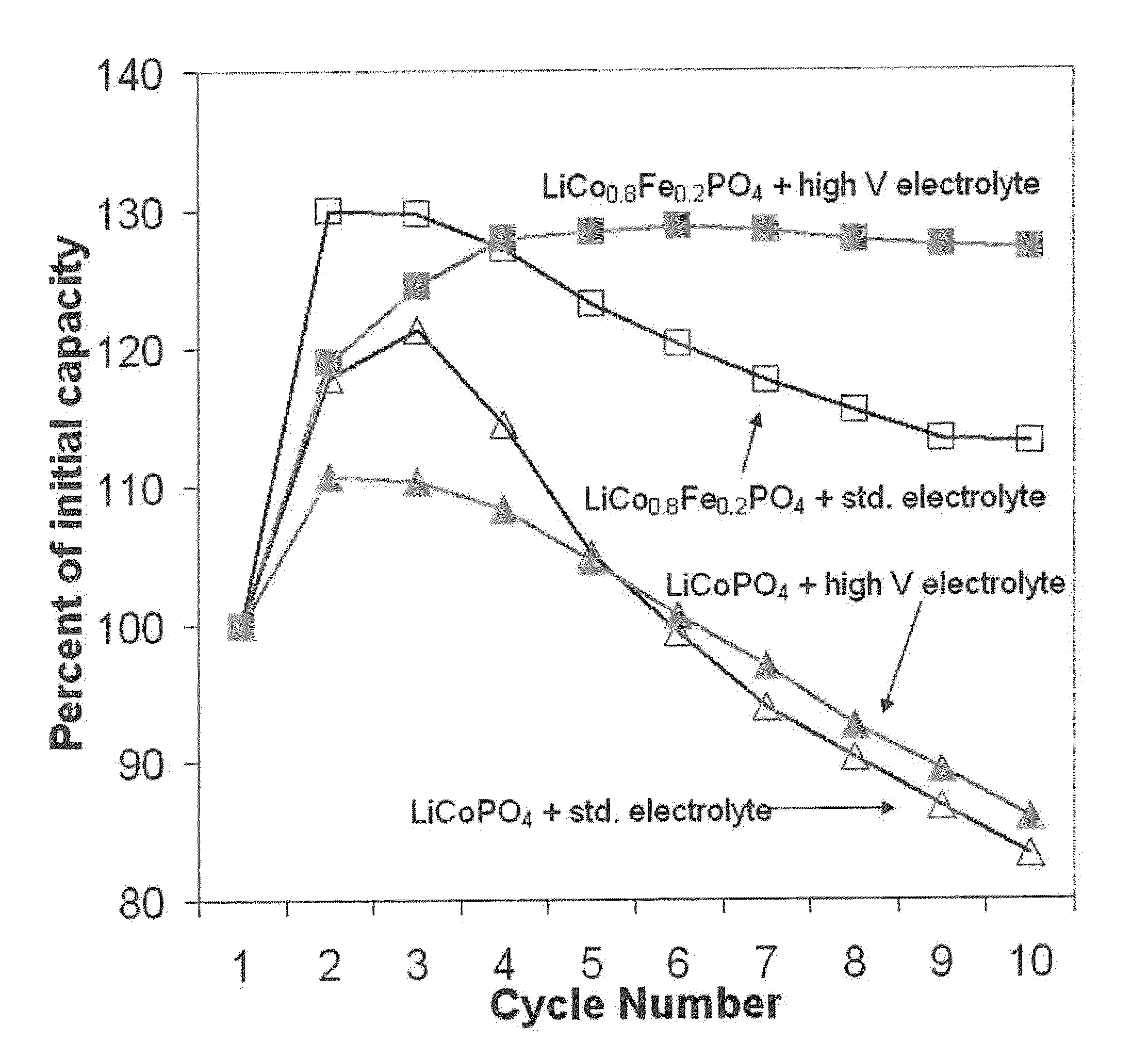High voltage lithium ion positive electrode material with improved cycle life
a positive electrode material and high-voltage technology, applied in the direction of electrochemical generators, cell components, transportation and packaging, etc., can solve the problems of poor cycle life of charge/discharge electrode materials, low electronic conductivity, poor cycle life of electrode materials, etc., and achieve good cycle life
- Summary
- Abstract
- Description
- Claims
- Application Information
AI Technical Summary
Benefits of technology
Problems solved by technology
Method used
Image
Examples
example
[0042]LiCoPO4 samples were prepared via a citrate complexation route. Co(OH)2, LiH2PO4, and citric acid, 1, 1.01, 1.02, molar ratio, respectively, were mixed into deionized water until all solids were dissolved. The resulting solution was evaporated to dryness via a microwave oven. The dried mass powder mixture was removed, ground lightly with mortar and pestle and heated in air at a rate of 10° C. min−1 to 600° C. and the reactant mixture was held at this temperature for 12 hours.
[0043]In order get Fe substitution on both the Li and Co sites, Co(OH)2, LiH2PO4 and FeC2O4.2H2O with a nominal stoichiometry of LiCo1-xFexPO4, x=0.05, 0.1, 0.2 were weighed and then dissolved in 1 M HNO3 (aq). The resulting nitrate solution was evaporated to dryness via a microwave oven in a fume hood and then heated under N2 at a rate of 10° C. min−1 to 600° C. and held at this temperature for 12 hours. During the decomposition of the co-precipitated nitrates, the decomposition of the nitrate ion provide...
PUM
| Property | Measurement | Unit |
|---|---|---|
| voltage | aaaaa | aaaaa |
| voltage | aaaaa | aaaaa |
| voltage | aaaaa | aaaaa |
Abstract
Description
Claims
Application Information
 Login to View More
Login to View More - R&D
- Intellectual Property
- Life Sciences
- Materials
- Tech Scout
- Unparalleled Data Quality
- Higher Quality Content
- 60% Fewer Hallucinations
Browse by: Latest US Patents, China's latest patents, Technical Efficacy Thesaurus, Application Domain, Technology Topic, Popular Technical Reports.
© 2025 PatSnap. All rights reserved.Legal|Privacy policy|Modern Slavery Act Transparency Statement|Sitemap|About US| Contact US: help@patsnap.com



